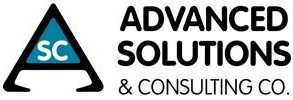The world of manufacturing is on the cusp of a revolution. Additive and cluster manufacturing, near-shoring, and the increasing digitization of the shop floor all mean agility and responsiveness are more important now than ever before. New technologies and game-changing practices have led to new connections and an explosion of data. Organizations must find a way to format this endless stream of information into useful and insightful data that can be used to make real-time business-critical decisions at every organizational tier and across the supply chain. Manufacturing industry ERP solutions, initially designed to streamline decision-making processes and improve company productivity by automating certain business practices, have proven slow to keep up with the ever-changing nature of the manufacturing sector and have even begun to slow down performance.
Years ago, legacy systems were designed to fulfill the needs of a completely different generation of end user. Manufacturers adapted to changes in the industry by adding new technologies as they popped up, resulting in “complexity creep”. These old systems that were never designed for a new generation of manufacturing practices and requirements were patched and jury-rigged in a clumsy attempt to keep up with the times, becoming overly complex in the process. This excessive complexity is costly to the organization, silently seeping into every facet of the organization and weighing it down, affecting company agility and responsiveness. Complexity is almost virus-like in nature, becoming more dangerous as the organization grows and tries to keep pace with emerging industry requirements and limiting speed and performance.
Decision-making, the area that most relies on responsiveness and accurate data, is particularly affected by complexity creep. Employees often complain of difficulties accessing the data they need to make accurate and timely decisions. In fact, industry research puts ease-of-use at the top of the ERP wish list for employees across the organization.
Going forward, the responsiveness and agility will only become increasingly more important. As new digital technologies are introduced to the manufacturing sector, more and more connections are created, building the Internet of Things. The increasing number of connections causes exponential data growth, requiring faster means of accessing and formatting this information for the purposes of decision making. Manufacturing industry ERP systems are now under pressure to prioritize responsiveness.
The only way for a manufacturer to move forward in this new digital epoch of manufacturing is by streamlining processes and focusing on simplicity. Complexity creep prevents ERP systems from reaching all aspects of the organization, preventing the business from reaching its maximum potential.
The process of simplifying is often incorrectly equated with “dumbing down” the ERP system and removing functionality from the software. In fact, increasing simplicity means finding ways to maintain functionality while improving ease-of-us and intuitiveness. The focus isn’t on reducing the amount of tools available to the user, but redesigning how the end user interacts with the system’s toolset, removing unnecessary steps in the flow, and tearing down barriers to information.
Strategically, simplifying ERP is about supporting information access and responsiveness to industry dynamics, providing to greater strategic control. This means ensuring the end user always has the most up-to-date and accurate information to allow them to make immediate, business-critical decisions.
ERP systems must be capable of reacting to changes and requirements on a day-to-day basis. Operationally, a robust ERP system is the foundation of any business and is responsible for managing business-related activities and optimizing processes.
The right ERP system allows for meaningful two-way communication between the organization and its customers. Externally, simplifying ERP means prioritizing providing distinct service levels throughout different tiers of the organization, quickly detecting setbacks and opportunities, and supporting the business in quick and decisive action.
Personally, simplifying ERP means valuing your team’s time and experience. Simplifying ERP works toward improving productivity and ease-of-use.
ERP simplification also includes improving ERP deployment. Modern manufacturing practices are trending towards cloud-based models. The benefits of a global deployment model based in a single location are clear: greater control, wider visibility, and the added advantages of offloading workloads to the cloud. Moving to a cloud-based model also removes the need for system upkeep and maintenance, removing the burden of keeping a dedicated IT team on payroll.


